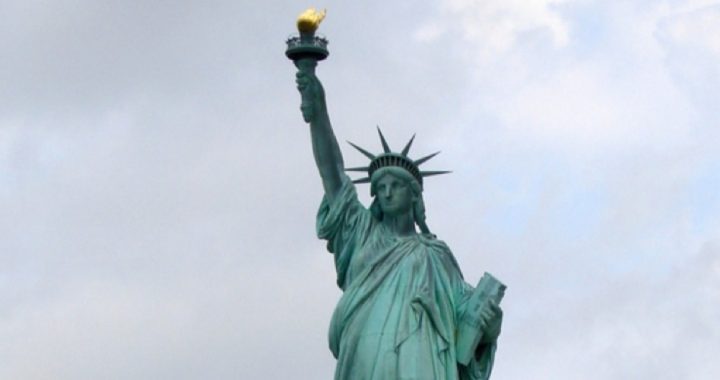
According to a report released in May by Eric Jensen, a statistician/demographer with the Census Bureau’s Population Division, more Asians than Mexicans are now immigrating to the United States.
The tipping point occurred in 2009, when immigrants identifying as non-Hispanic, Asian alone (34.7 percent) first exceeded those of Hispanic origin (30.1 percent). By 2013, the percentage of non-Hispanic, Asian alone immigrants had increased to 40.2 percent of the total, while the percentage of Hispanics had dropped to 25.5 percent.
Jensen also noted that, based on his research, China alone replaced Mexico in 2013 as the leading country sending immigrants to the United States. The sources of immigrants into the United States has shifted dramatically since 2000, when 41.2 percent of immigrants were Hispanic (Mexican, Central American, Caribbean, or South American) compared with 23.6 percent for those of non-Hispanic, Asian alone origins.
Jensen’s figures were compiled from a chart produced by the U.S. Census Bureau, Population Division.
China is not the only country in Asia from which migration to the United States has increased. Other Asian nations sending large numbers of immigrants to this country in 2013 included India, Korea, the Philippines, and Japan. In fact, the Census Bureau’s American Community Survey (ACS) for 2013 indicated that after China, which sent 147,000 immigrants to the United States, India had moved into second place, with 129,000 immigrants to the States. Mexico sent 125,000 immigrants. Since the data was for both legal and illegal migrants, it is still possible that the numbers for Mexico (from which it is far easier to cross the border illegally than it is to come here illegally from across the Pacific) are underreported.
A report about the changing pattern of migration to the United States posted by NPR in May quoted a statement from William Frey of the Brookings Institution, who noted:
We have continued employment opportunities in the United States for people in Asian countries, some in high-tech and engineering. Many come here to study in graduate schools and wind up staying here.
As for the decline in migration from Mexico, Frey stated:
On the other hand, a lot of the kinds of low-wage jobs that attracted people from Mexico and other Latin American countries to the United States have dried up due to the Great Recession and the word has gotten out.
An August 29 AP report on the topic of changing immigration patterns featured an interview with Siddharth Jaganath, a native of India who came to Dallas to earn his master’s degree at Southern Methodist University. Jaganath originally planned to return to India after receiving his master’s, but instead took a management position at a communications technology company and started a family in the Dallas suburb of Plano.
“You start growing your roots and eventually end up staying here,” said Jaganath.
AP quoted Marc Rosenblum, deputy director of the U.S. Immigration Policy Program for the Washington-based Migration Policy Institute, who offered his take on the changing immigration pattern:
We’re not likely to see Asians overtake Latin Americans anytime soon [in overall immigration population]. But we are sort of at the leading edge of this transition where Asians will represent a larger and larger share of the U.S. foreign-born population.
The comparison between immigrants coming to the United States from China and India, in contrast with others from Mexico, was noted in recent statements made by presidential candidates about the subject of “birthright citizenship.” While most of the migration from Asia is the result of people from China or India coming to the United States on student or work visas and afterwards obtaining permanent resident status, the practice of “maternity tourism” by Chinese women coming to the United States on tourist visas, and then having babies in American so that their children will obtain U.S. citizenship, has also been reported in the news more often in the past few years.
This practice is encouraged by current U.S. law, which — under an interpretation of the 14th Amendment that many constitutional scholars say is faulty — grants citizenship to babies born in the United States to mothers who are not U.S. citizens. When the mothers are here illegally, their offspring are sometime referred to as “anchor babies.” Although, as minors, they are unable to petition for their illegal alien parent to be lawfully admitted into the United States for permanent residence, their citizenship does qualify them (and indirectly their mothers) to a wide range of social services, including educational, medical, and welfare benefits. Mothers who are here illegally may use their babies’ status to delay deportation and eventually qualify for permanent residence, hence the term “anchor babies.” Chinese women who come to America legally on tourist visas to have babies here have a different objective, however. Their goal is to allow their children to eventually be able to migrate to the United States to achieve an education or employment.
Presidential candidate Jeb Bush took some flak for using the term “anchor baby” from the Hillary Clinton campaign on August 24, which released a video juxtaposing clips of Bush and candidate Donald Trump using the term as a way to assert that there was little difference between the two candidates on immigration. Bush quickly countered, “this is ludicrous for the Clinton campaign and others to suggest that somehow I’m using [anchor babies as] a derogatory term.”
Bush, perhaps out of fear that the issue might harm him among Hispanic voters, stated at an August 24 press conference that when he used the term he meant to apply it mostly to Asians. He at once defended birthright citizenship, generally, while emphasizing his opposition to another facet of it: “maternity tourism” by Asian women.
Trump, on the other hand, made “ending birthright citizenship for the children born in the United States of parents who are here illegally” part of his campaign platform, released on August 16.
As we have noted, there are major difference between immigrants from Asia and Latin America that may have impacted these recent figures showing greater migration from Asia than Mexico. Most importantly, Asians with the financial resources to fly across the Pacific to the United States have most likely complied with U.S. immigration law. Though many Mexicans also migrate legally, it is far easier for an illegal immigrant from Latin American to evade our Border Patrol and enter our nation illegally, so the official figures regarding immigration from Mexico very likely underreport the actual numbers.
Related articles:
Jeb Bush: Asians Abuse “Noble Concept” of Birthright Citizenship
Trump Gives New Life to Bill on Birthright Citizenship
Trump Is Right on Ending Automatic Citizenship for Anchor Babies
Time Magazine Cover Story Asks: Does the Constitution Still Matter?
“Maternity Tourism” Business Booming in California
Senators Vitter and Paul Seek Closing of Anchor Baby “Loophole”
State Legislators for Legal Immigration Ask Congress to Reconsider Intent of 14th Amendment



